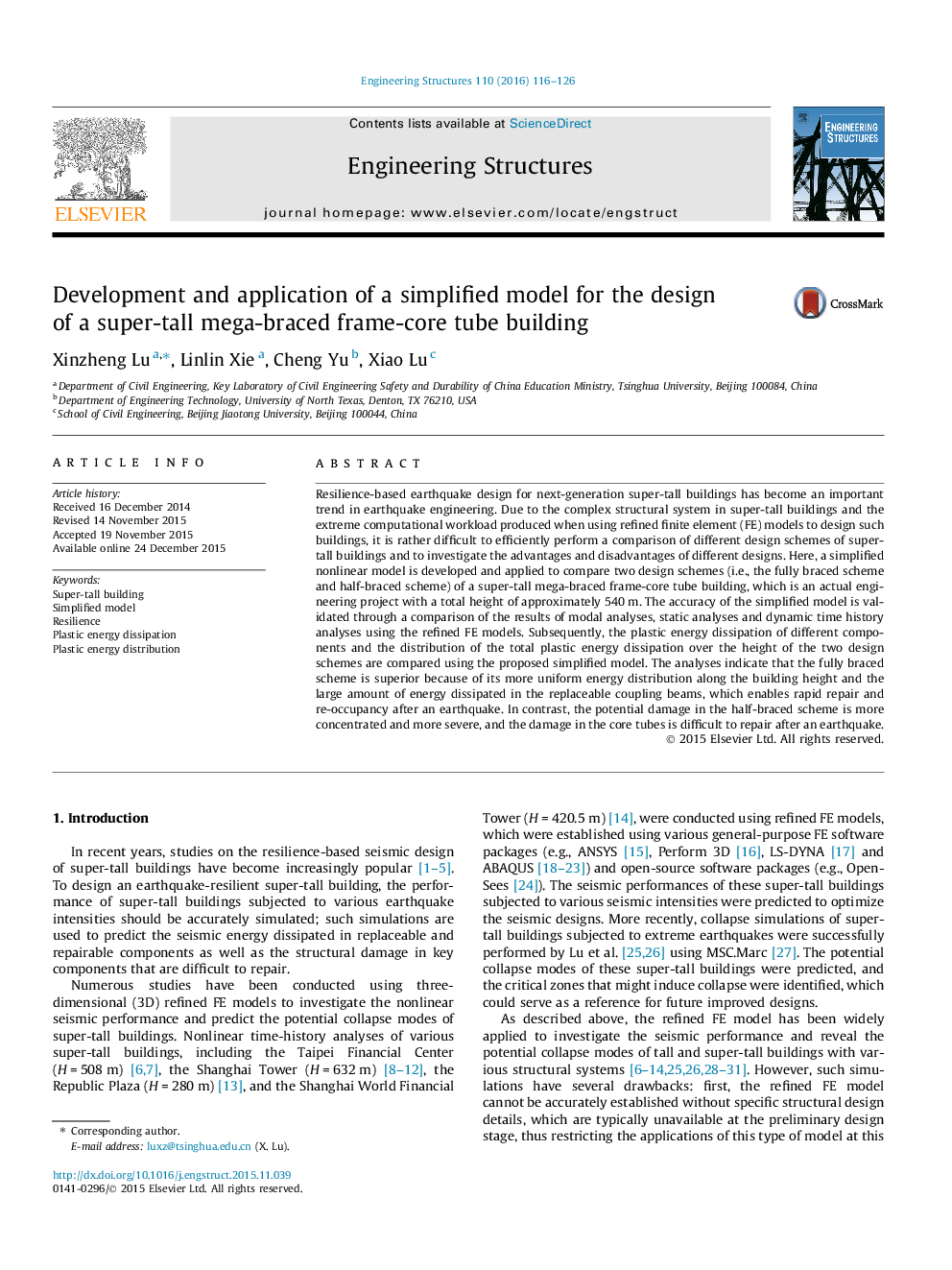| کد مقاله | کد نشریه | سال انتشار | مقاله انگلیسی | نسخه تمام متن |
|---|---|---|---|---|
| 265900 | 504334 | 2016 | 11 صفحه PDF | دانلود رایگان |
• A simplified model is developed for the seismic analysis of a super-tall building.
• The computational time is reduced by over 100 times with a reliable accuracy.
• This model is used to compare two design schemes in terms of resilient performance.
• The fully braced scheme enables rapid repair and re-occupancy after earthquakes.
Resilience-based earthquake design for next-generation super-tall buildings has become an important trend in earthquake engineering. Due to the complex structural system in super-tall buildings and the extreme computational workload produced when using refined finite element (FE) models to design such buildings, it is rather difficult to efficiently perform a comparison of different design schemes of super-tall buildings and to investigate the advantages and disadvantages of different designs. Here, a simplified nonlinear model is developed and applied to compare two design schemes (i.e., the fully braced scheme and half-braced scheme) of a super-tall mega-braced frame-core tube building, which is an actual engineering project with a total height of approximately 540 m. The accuracy of the simplified model is validated through a comparison of the results of modal analyses, static analyses and dynamic time history analyses using the refined FE models. Subsequently, the plastic energy dissipation of different components and the distribution of the total plastic energy dissipation over the height of the two design schemes are compared using the proposed simplified model. The analyses indicate that the fully braced scheme is superior because of its more uniform energy distribution along the building height and the large amount of energy dissipated in the replaceable coupling beams, which enables rapid repair and re-occupancy after an earthquake. In contrast, the potential damage in the half-braced scheme is more concentrated and more severe, and the damage in the core tubes is difficult to repair after an earthquake.
Journal: Engineering Structures - Volume 110, 1 March 2016, Pages 116–126
